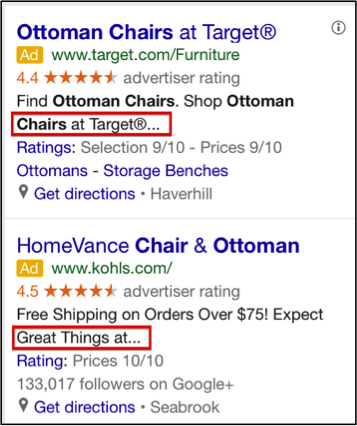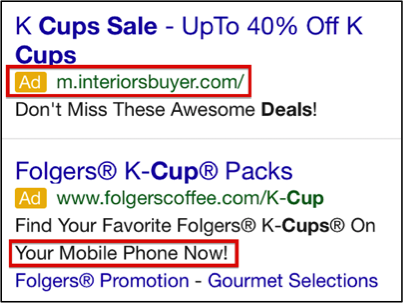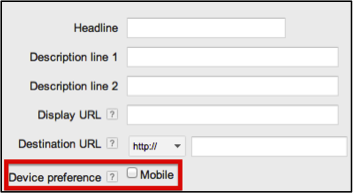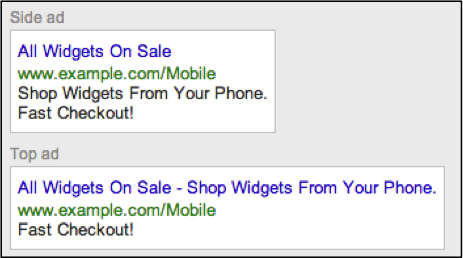This week we’ve been writing about why we perform tasks certain ways in our PPC accounts. Today I’ll look at why it’s pivotal to write mobile specific ads. I’ve found a lack of mobile specific ads to be one of the top errors in many accounts. Setting aside your opinion on profitability of mobile traffic, if you are going to target smart phones, then you need to write mobile specific ads.
Why Mobile Specific?
Built correctly, a mobile website should be a condensed, easy to use version of its desktop counterpart. The mobile website may have less pages, or the product pages may have shorter descriptions and fewer images. The main point is that the site be optimized so the visitor can understand and navigate more efficiently on a much smaller screen than desktops.
This same notion should be taken into account when writing mobile ads.
Let’s take a look at the mobile results for the term “ottoman chairs.” When we look at the actual ads, we see that both are truncated.
With the truncated ads, the user does not see the total message. Additionally, there is no indication that these ads are written solely for mobile. The messaging does not reference mobile (ie: shop from your phone, mobile checkout, etc) nor does the display URL (ie: m.target.com or target.com/Mobile).
Let’s now take a look at a couple of ads that clearly reference the mobile audience. When conducting a search for “K-Cups,” both ads speak to the fact that I’m a mobile user.
Interiorsbuyer.com references mobile in the display URL while Folgers tells me that I can shop directly from my phone. I would be more likely to click these ads since they better speak to my current situation.
Writing Mobile Specific Ads
Now that we have identified why it’s important to write mobile specific ads, let’s discuss how to best write them. First, make sure you check “Mobile” in the device preference option. If you don’t select this option, then your mobile specific messaging has the potential to show on desktops and tablets.
The next item to keep in mind is that between description lines one and two, you should use no more than sixty characters in order to avoid truncation (like we saw in the first image). Your ad won’t always get truncated if you use more than sixty characters, but I consider this number to be safe.
The next step is to write your mobile ads. Just like desktop, I like to run at least two mobile ads at a time to see which one will better perform. Also like desktop, I ensure that at least one of my ads makes use of the extended headline (when description line one ends in a period). Here’s another look at the InteriorsBuyer mobile ad.
Description line one references up to 40% off K Cups. Since it is a distinct sentence, the text is pulled into the headline making it extremely eye catching.
Below is another example of an ad written specifically for mobile users. The ad references that visitors can shop from their phones and that checkout is fast.
Other Considerations
When writing mobile specific ads there are a few additional items to keep in mind.
- Similar to ad copy, mobile specific sitelinks should be no more than 15 characters. More sitelinks have the potential to show when each individual sitelink is shorter
- Utilizing call extensions so visitors can call directly from their mobile devices
- If app downloads are important, consider the mobile app extension
Final Thoughts
Mobile specific ads are easy to write and have the potential to better engage your mobile audience. If you are going to target mobile, even if your bid modifier is -90%, make sure you take the time to write these ads.








